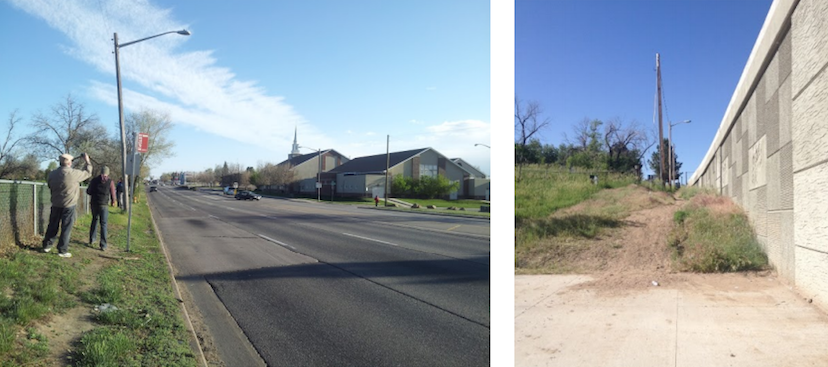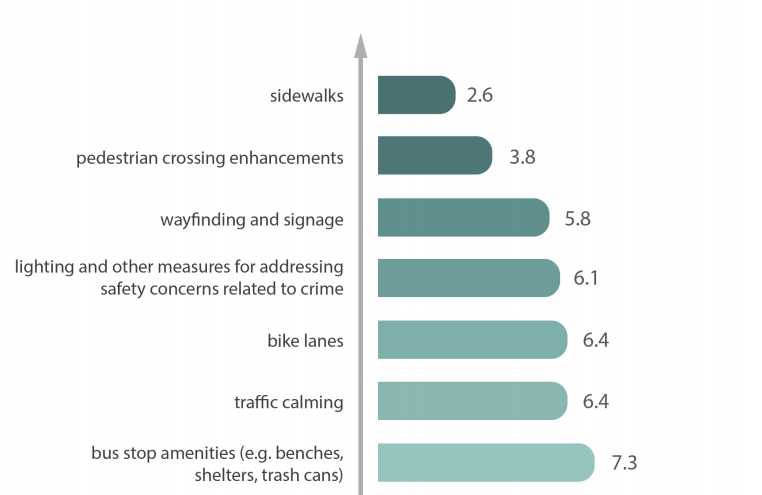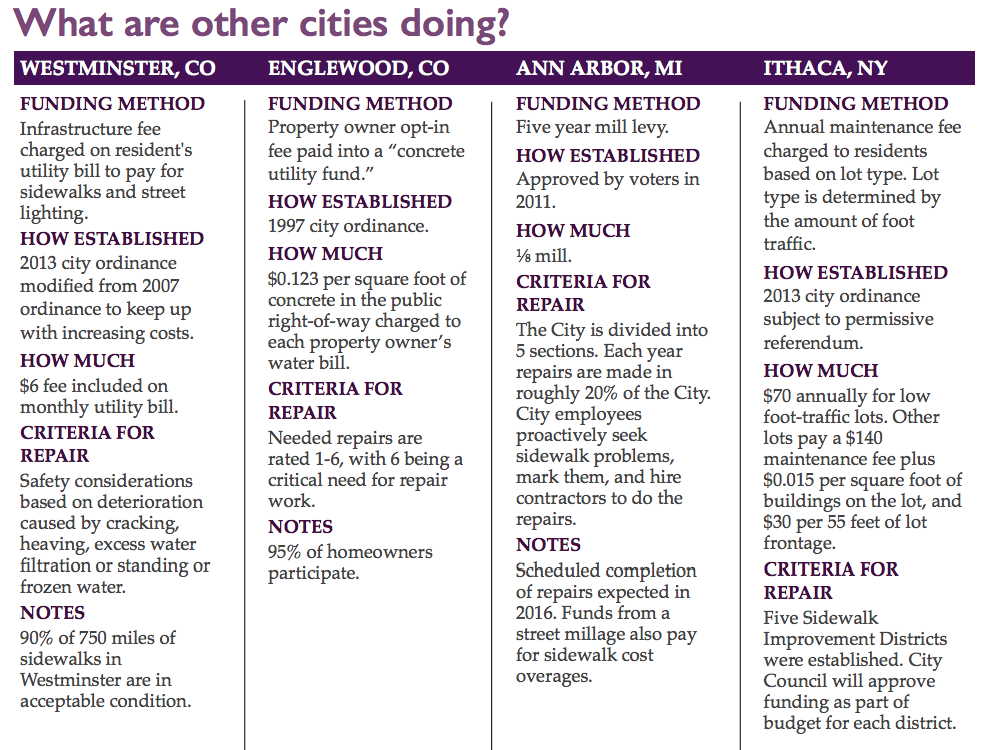Denver Can Do Better Than Its Shoddy Connections to Transit

Denver’s transit network is growing, but no government body has taken responsibility for improving access to train stations and bus stops — not RTD, not Denver Public Works, not the Colorado Department of Transportation, not Denver’s elected officials. It’s the city’s low-income residents who bear the brunt of this failure. Those are the findings from a report released today by the transit advocates at Mile High Connects.
Critical infrastructure like sidewalks, crosswalks, bike lanes, and safe bus stops are known as “first and last mile connections.” They enable people to get to and from transit stations without driving. In Denver, there is no citywide source of funds for these connections, according to the report, leading to patchwork infrastructure throughout the city — especially in low-income neighborhoods.
“Some people use [transit] because of comfort, and some people use it because of a need,” said Cecillia Calvillo through an interpreter. Calvillo volunteers with Globeville Elyria-Swansea LiveWell, which aims to make northeast Denver’s streets more livable and active. “The communities that we’re representing and many other communities use it because it’s a need. We don’t have another way to move.”
Advocates held focus groups and surveyed people who know about this stuff — people from city public works agencies, CDOT, RTD, developers, business improvement districts, transportation nonprofits, housing authorities, transportation management firms, and of course, people who depend on transit. Participants were asked to rank 13 aspects of first and last mile connections. Here’s the average ranking of the top seven elements:

Although sidewalks are people’s highest priority, agency budgets give them short shrift. Instead, sidewalk maintenance falls to property owners in Denver, where most transit riders in the region live. This policy creates a system where low-income residents are asked to shoulder the burden of basic public infrastructure. The haphazard presence of sidewalks also hinders people from connecting to transit.
“We can no longer consider first and last mile connections as a ‘nice to have’ — something we throw money at when we find some extra change in the couch cushions,” said Jill Locantore, policy director for WalkDenver. “It has to be considered an important part of our basic transportation system, and therefore all current funding streams as well as any new funding for transportation must include either a set-aside or a strong emphasis on first and last mile connections.”
If Mayor Michael Hancock and the City Council wanted to, they could pass an ordinance to ensure the city’s poorest neighborhoods don’t have the poorest sidewalks. The report offers concrete solutions from other cities — even Denver’s suburbs — to create robust sources of sidewalk funding. Westminster adds a fee to utility bills, for example, while Ann Arbor, Michigan, raised funds for sidewalk repair from a voter-approved tax. The report revives a 2002 idea from DPW: fund sidewalks through a property fee of $1 per linear foot (accounting for inflation, the fee would be set at $1.25 today).

“I have some concerns for how this will be done with an eye towards equity, and I think currently it’s just not happening at all,” said Stephen-Michael Moore, a policy analyst with FRESC, which worked on the report. “There’s no concept of equity when it comes to many forms of investment by cities and states. So I think that as much as we can find those dedicated revenue sources and then figure out a way to prioritize the people who need it the most, that will be real crucial.”
Here are other high-level recommendations in addition to the sidewalk funding question:
- Set separate mode share goals for walking, biking, and transit, to guide funding priorities. The city wants 15 percent of all trips to be taken by bike or on foot by 2020, yet it only allocates 6 percent of its transportation budget to these projects, Locantore said.
- Incorporate sidewalks into routine roadway maintenance.
- Track spending on sidewalks, maintain an inventory of pedestrian infrastructure, and monitor sidewalk usage, so the city can make data-driven decisions.
First and last mile connections are about more than sidewalks, and the report gets much deeper and more specific. Stay tuned to Streetsblog Denver for other findings from the report.
This post has been changed to accurately convey the funding proposal’s fee structure, which would charge property owners per linear foot, not square foot.


